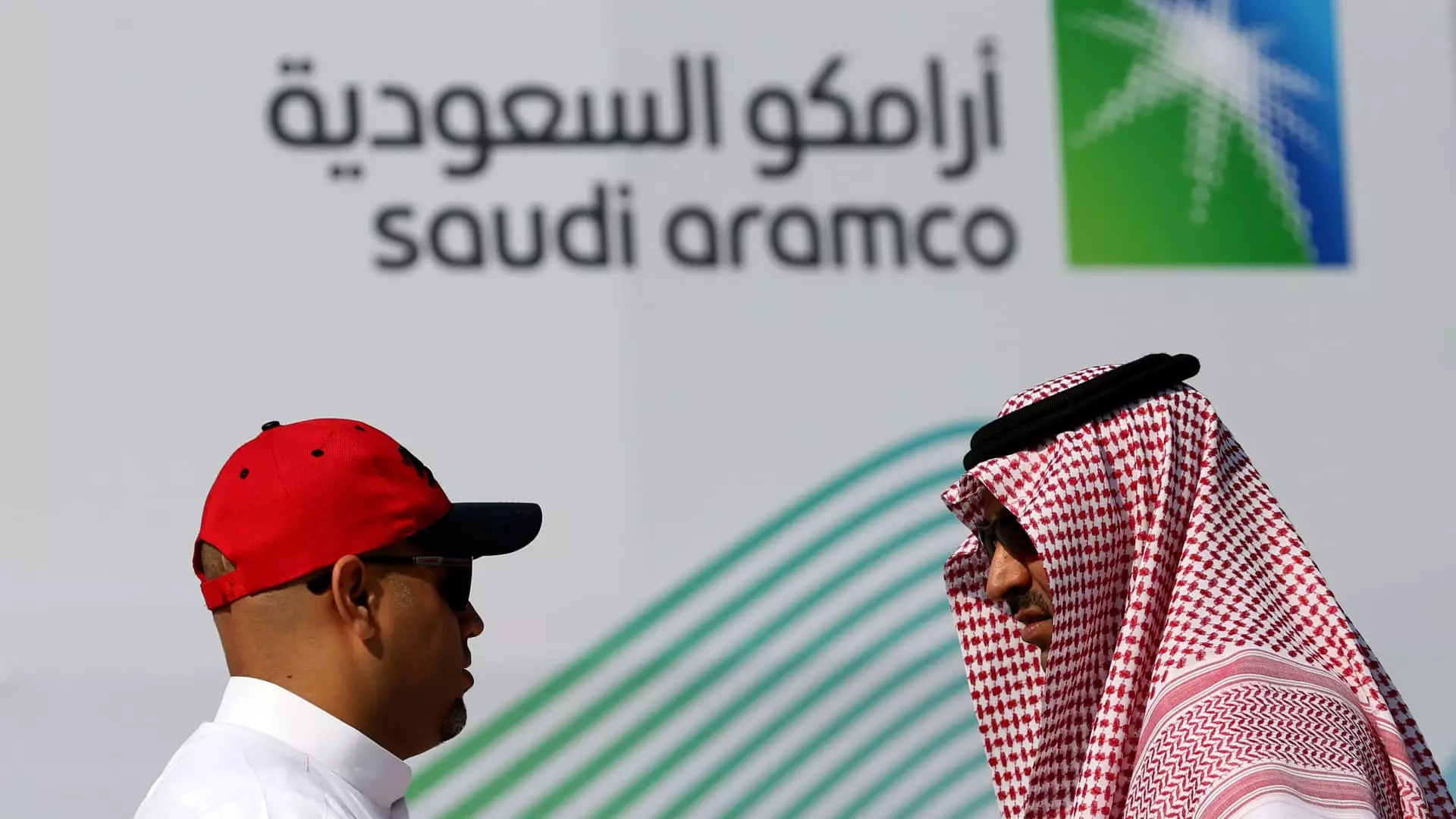Saudi Aramco, the colossal state oil enterprise that stood as a symbol of economic might for Saudi Arabia, has reported a 5% drop in net profit for the first quarter of 2025 compared to the previous year. The revenue reached $26 billion, down from $27.3 billion in the same timeframe last year. Although this figure exceeded analyst expectations of $25.3 billion, it signifies more than just a number—it’s a harbinger of deeper systemic issues threatening the very foundations of the Saudi economy.
Investors have become increasingly wary as the tides of global oil markets shift under the weight of declining prices and weakened demand. The free cash flow plummeted to $19.2 billion from $22.8 billion, while cash flow from operations also dwindled, mirroring the struggles faced by the global energy sector. This decline is not merely an aberration; it is indicative of heightened volatility in international markets, exacerbated by economic uncertainties that seem to mount with each passing day.
Dividend Dilemmas
In an environment marked by financial strain, Aramco’s decision to slash its performance-linked dividend payout for the last quarter of 2024 to a mere $200 million—down from a staggering $10.2 billion—casts a dark shadow over its fiscal health. For a government that relies heavily on oil revenues, this reduction presents a chilling reality. The base dividend, which did see a modest increase of 4.2% year-on-year, stands in stark contrast to the reality of total dividends dropping from $31 billion to $21.36 billion. This sharp contraction raises questions about the sustainability of the state’s budget and its capacity to fund essential services and ambitious mega-projects that have come to define Saudi Arabia’s Vision 2030.
CEO Amin Nasser touts Aramco’s financial robustness, highlighting the company’s unique scale and low-cost operations as essential sources of resilience. However, this rosy narrative fails to account for the iceberg lurking beneath the water. With global oil prices in decline and demand shrinking, can we still buy into this perception of strength? It seems increasingly disconnected from the economic realities facing the kingdom.
Able to Adapt? Or Unprepared for Change?
Nasser’s emphasis on disciplined capital planning is lost on a populace weary of austerity measures. Forecasts from financial analysts and energy agencies suggest persistent downward pressure on oil prices for the remainder of 2025, with predictions of a market surplus that could worsen if prices remain stagnant or drop further. Major banks like Morgan Stanley and Goldman Sachs have reduced their oil price outlooks for the year, and such adjustments resonate ominously within the walls of Saudi budgeting offices.
The stark truth is that Saudi Arabia needs oil prices to elevate above $90 per barrel to balance its budgets, and current projections from experts indicate a far more dismal scenario. Farouk Soussa, the MENA economist at Goldman Sachs, warns of a burgeoning deficit that could explode to $70-$75 billion if prices hover around $62. The consequences of such a budgetary gap will likely mean increased borrowing and asset sales; it might endanger social stability as public services face unprecedented disruptions.
The Implications of OPEC+ Decisions
In attempts to balance the scales, Saudi Arabia, within OPEC+, has pursued an aggressive strategy for production cuts, aiming to stabilize the precarious situation in the oil markets. Yet, recent announcements to raise production targets put this strategy at risk, presenting a paradox where the kingdom is forced to decide between immediate gains and long-term economic viability. The inconsistency of the production strategy not only frustrates stakeholders but raises questions of competence regarding fundamental economic decisions.
As global uncertainties mount, could it be time for Saudi Arabia to reassess its dependency on oil? The reality is that fossil fuel consumption habits are evolving, and we are swimming into uncharted waters. The stakes are high, and the risks associated with a heavy reliance on a single commodity could become unsustainable.
The reductions in dividends hint at a future of fiscal tightening and economic reconfiguration, with Saudi Arabia facing a crucial crossroads. The nation on the brink of transformation now has to make critical decisions about its economic structure that will resonate far beyond mere quarterly earnings reports. The world is changing, and the question remains—will Saudi Arabia adapt or falter?

